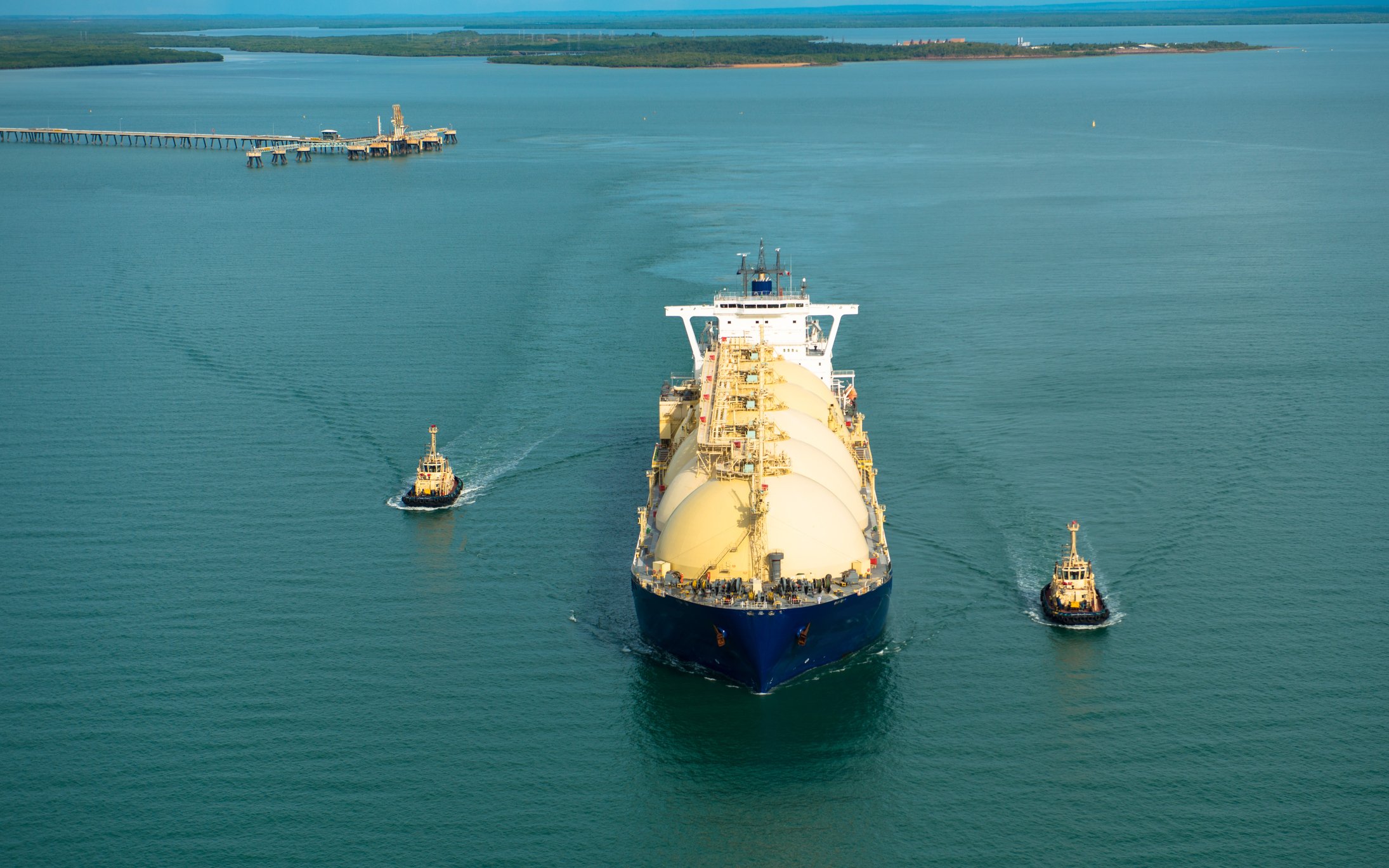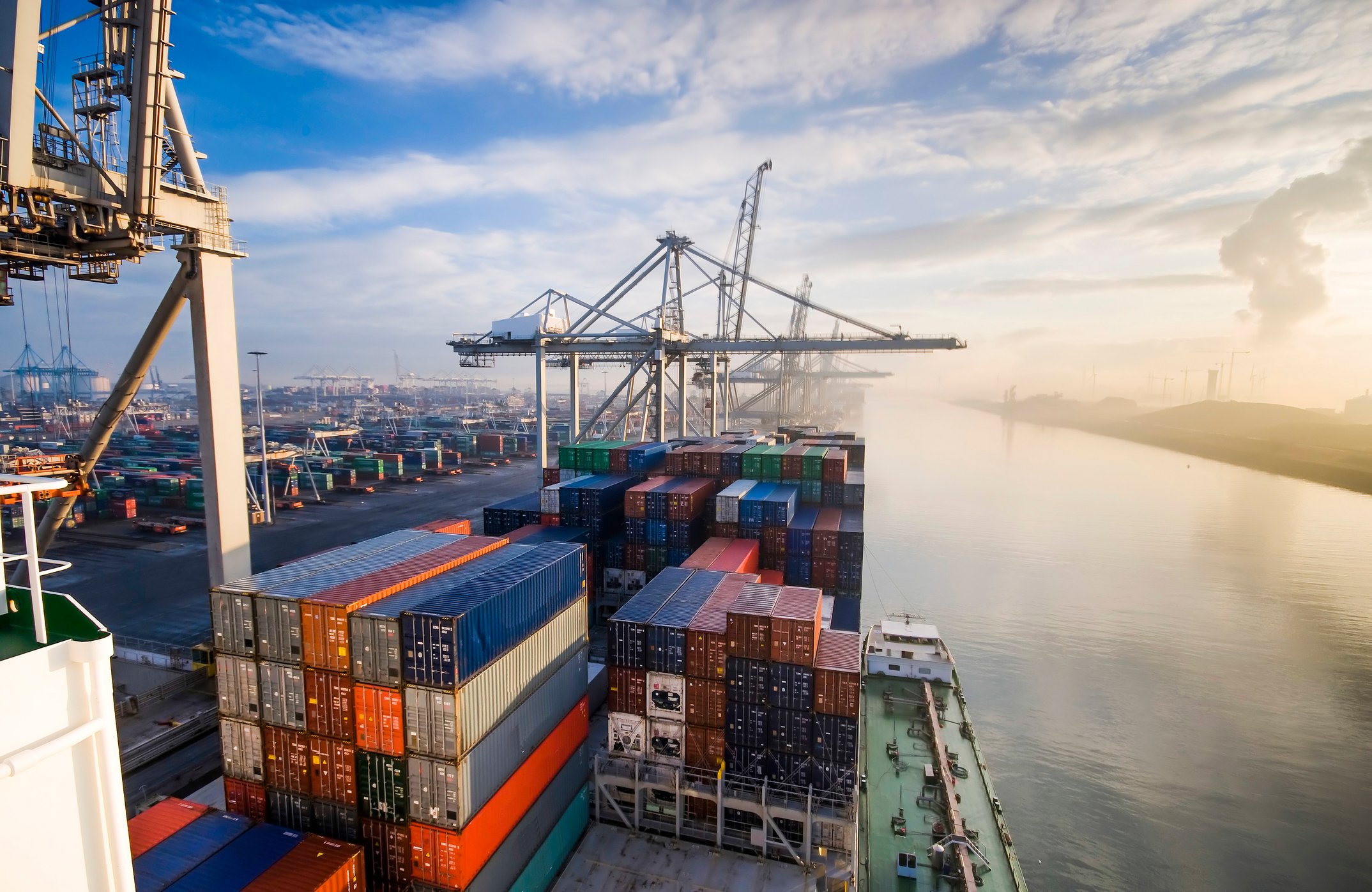The past few years have been some of the worst ever to hit the global shipping industry. Slowing global growth along with overcapacity sent shipping rates sinking below breakeven levels for many shippers. Conditions got so bad that last summer one of the world's largest shipping companies declared bankruptcy, an event that sent a tsunami of shock throughout the sector.
However, that washout event might have been just what the industry needed to get back on its feet. That appears to be the case given some recent data points and comments by shipping industry executives, which suggest that conditions have turned the corner and are starting to improve. It's a turn that could finally reverse Seaspan Corporation's (SSW +0.00%) long stock slide.

Image source: Getty Images.
The market leader just called the bottom
Earlier this month, Danish shipping giant A.P. Moller-Maersk provided a glimpse into the market when it reported first-quarter results. While the company lost a boatload of money during the quarter, reversing a year-ago profit, that was primarily due to an 80% increase in fuel costs due to higher oil prices. The results, though, masked some notable improvements, such as that average freight rates rose 4.4% while revenue and volumes were both up 10% versus the prior year.
According to comments by Maersk CFO Jakob Stausholm on the quarter, "there is quite strong demand and it's not fully reflected in our results with market conditions improving toward the end of the quarter and in April." Because of that, he said, "we are optimistic because there has been no real ordering of new ships in the past two quarters and quite substantial scrapping in the short term."
As Stausholm notes, one of the drivers of his company's optimism is that shipping companies are getting rid of older boats to reduce industry capacity and tighten supplies. It's a trend that Seaspan Corporation participated in last December when it sold one of its older vessels to a ship recycler. Meanwhile, rival Costamare (NYSE: CMRE) sold two older ships for demolition this spring. With fewer ships operating this year, and limited new orders on the way, Maersk anticipates that demand will continue to outstrip capacity both for containers and vessels, which sets the sector up for tighter supplies and higher rates.

Image source: Getty Images.
Signing on the dotted line
One evidence of the rebound in demand is the rate at which shipping liners are signing time charter contracts with ship owners. Over the past couple of months, Costamare signed a dozen contracts for its existing fleet, including securing deals for all its remaining newbuild program. As a result, it no longer has any ships that aren't under contract. Meanwhile, it recently bought three secondhand vessels and immediately signed all of them to long-term contracts with Maersk.
Seaspan Corporation has also been able to find work for most of the largest ships in its fleet, including the three ships that it had to take back last year amid the fallout of a customer bankruptcy. Meanwhile, the smaller vessels in its fleet that it typically employs on the spot market or under short-term charters have experienced a significant increase in shipping rates over the past few months. The company noted that rates for these vessels were recently over $10,000 per day, which was a meaningful improvement from earlier this year when prices sank below market breakeven levels of $4,000 to $6,000 per day.
As a result of these developments, the company has far fewer worries than it did to start the year. The only vessels it needs to find contracts for are its last two newbuilds. However, Seaspan Corporation chose to delay taking delivery of those vessels until early next year, though it does hold the option to move up the delivery date if an appealing opportunity to contract those vessels arises. That optionality is important given the velocity that shipping rates are increasing and the outlook for further improvement because it's growing more likely that the company could soon find lucrative long-term work for those last two ships.
Investor takeaway
Conditions in the global container shipping sector appear to have bottomed out and are starting to improve. That's great news for Seaspan Corporation because shippers are signing more contracts at higher rates. As a result, the company is starting to generate more revenue from its fleet. Meanwhile, the improving market conditions could finally allow it to find customers for its last two newbuilds. These catalysts could be just the fuel to get its stock price heading higher.






